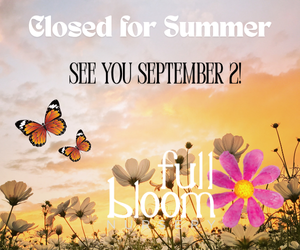The bearded iris is viewed as the orchid of the home garden by many gardeners. There are one or more large, showy flowers per stem. There are hundreds of cultivars in all colors of the rainbow, a fact seen as most appropriate since Iris was the goddess of the rainbow.
Flowering starts in early May and continues into June.These 2 to 3 foot erect plants have leaves that are sword shaped, rigid and 18 inches long, adding an interesting texture to the perennial border.
Generally easy to grow, full sun and well-drained soil are essential. Although some cultivars are expensive, iris is an excellent plant to share among your neighbors as it multiplies rapidly.Bearded iris in the
perennial border should be divided and replanted in midsummer.
The bearded iris has a fleshy rhizome or stem which grows along the surface of the soil.New side buds are developed each year until a large network of branched rhizomes is established. If large blooms are desired,
the plants should be divided and replanted every three to five years.
The best time to divide iris is immediately after blooming season is completed.You can put this off til fall, but summer is better. When
clumps are divided at this time, the new plants will be well established before winter and ready to produce a fine crop of flowers next spring.
In preparing to replant bearded iris, cut the leaves back to about six inches.Then, with a pointed shovel, dig all sides of the plant and lift the entire clump out of the ground.Turn your hose on it to wash away the soil. With a sharp knife, cut off the short side branches that have a cluster of leaves at the end. Discard the old center portion of the clump.
Replant the new divisions after cutting the feeder roots back to about two inches.If the tender feeder roots are broken, new roots will develop quickly.Set out your iris about 12 to 15 inches apart.Plant in well-drained soil, and cover with about an inch of soil.You may want to leave the top of root section exposed to cut down on the chance of rot.
After you've replanted your iris, apply a side dressing of fertilizer, say 10- 10-10 or 5-10-5 at about a handful per 10 feet of row. Scratch the fertilizer into the top inch of soil and water thoroughly.
Also, it's a good idea to apply a light covering of mulch to conserve moisture, just enough to cover the ground.After planting is complete, you need to water about every two weeks during times of drought.
For more information on bearded iris or other flowers, check out the UGA Extension publication, Flowering Perennials for Georgia Gardens, at http://www.ces.uga.edu/pubcd/b944-w.html.
Billy Skaggs
Agricultural Agent
Hall County Extension Coordinator
734 East Crescent Drive
Gainesville, GA30501
Phone:(770)531-6988
Fax: (770)531-3994
Email: [email protected]
Tuesday
August 5th, 2025
10:33PM











